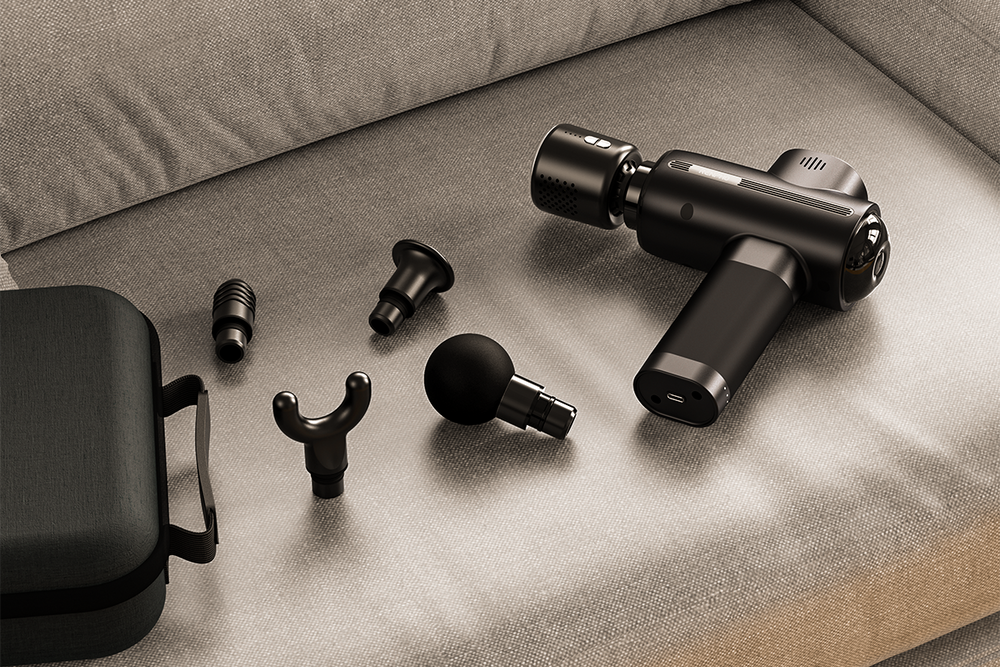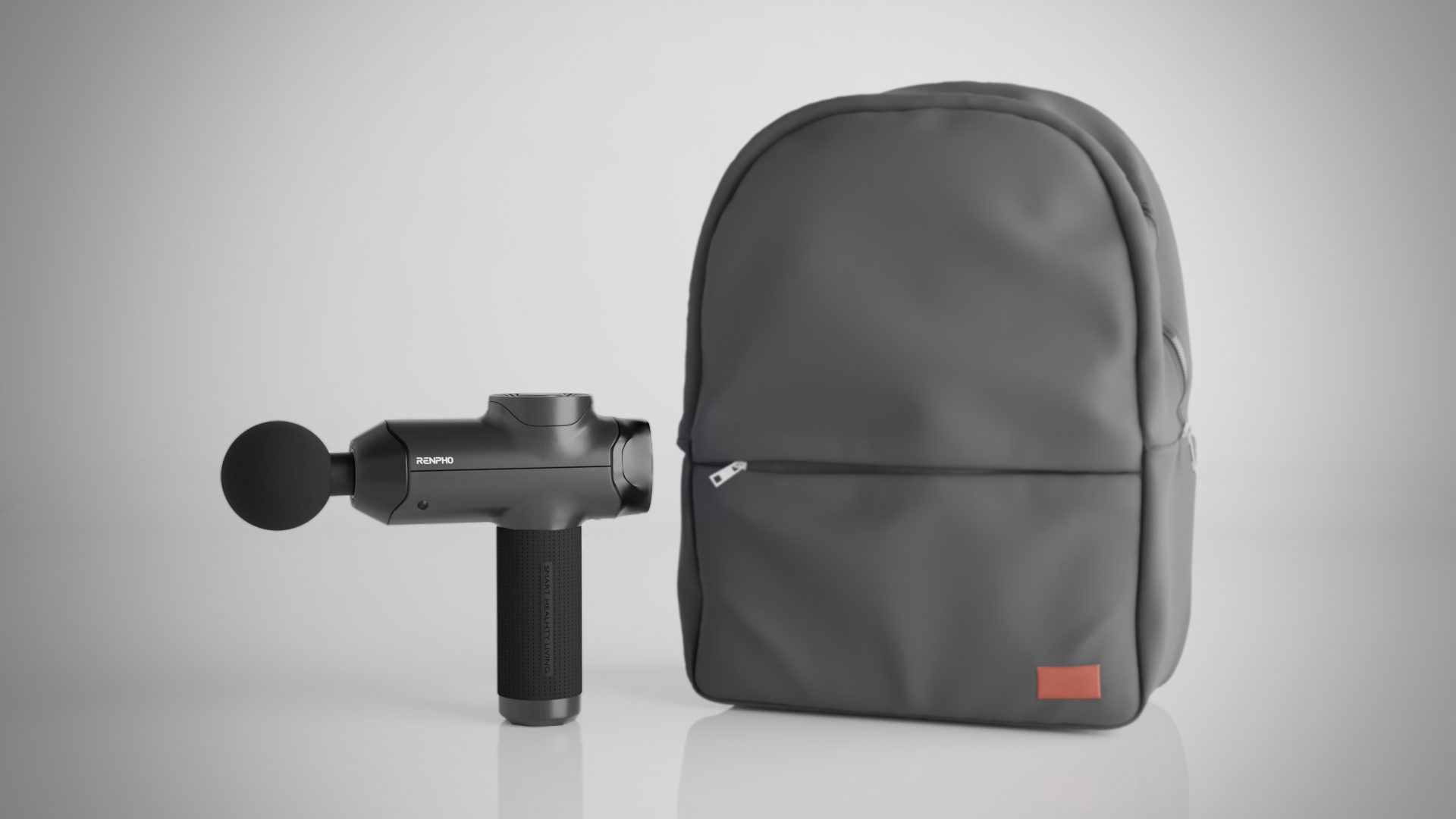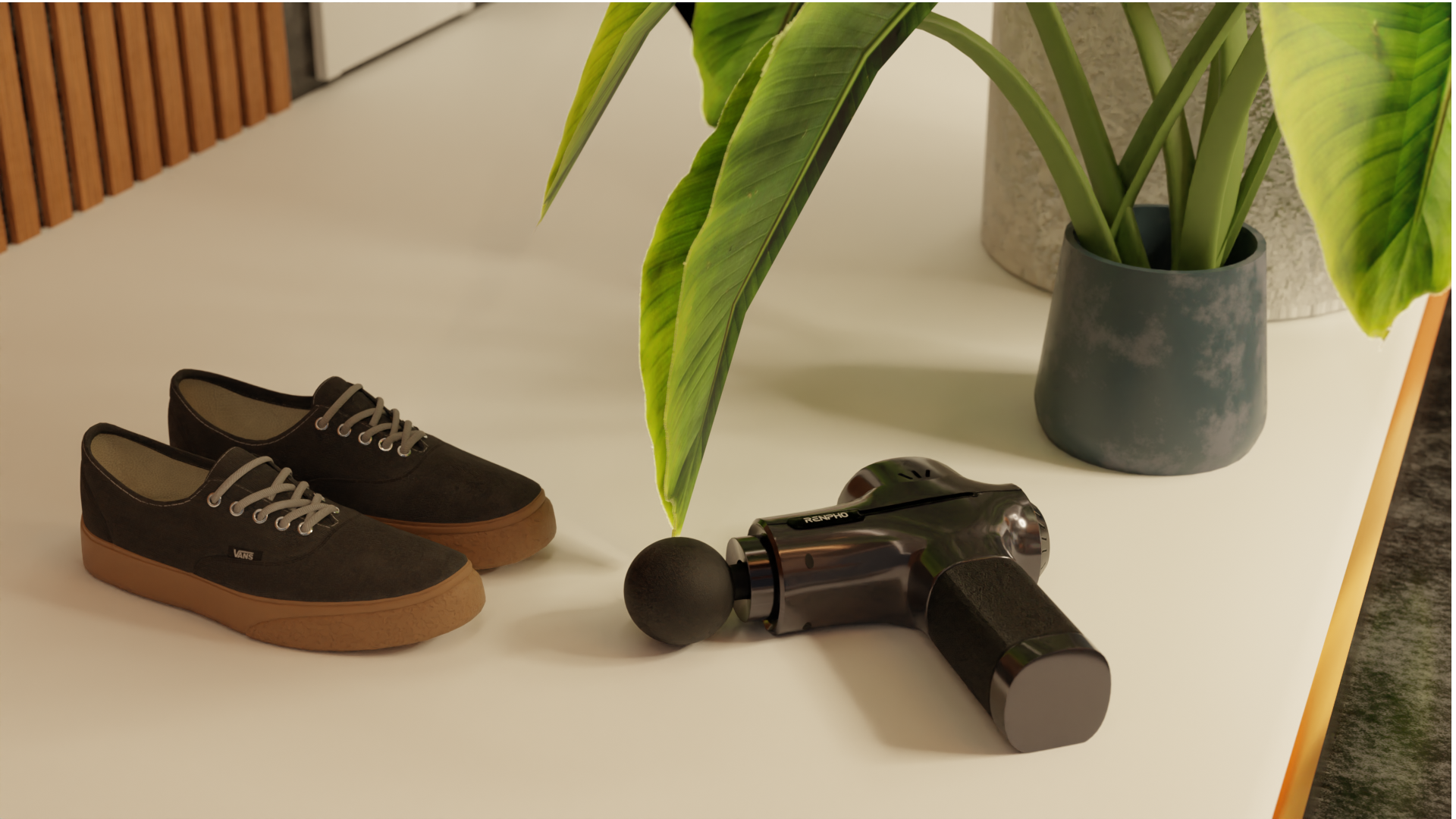Unlocking the Benefits of Using Massage Guns

Stay tuned to our latest news
These days, more and more people are embracing fitness as a way to feel stronger, healthier, and more energized. However, as beneficial as working out is, sore muscles often come the next day, with even the slightest movement triggering muscle pain. Massage therapy is one of the most effective ways to aid recovery, as it increases blood circulation and reduces muscle inflammation.
Instead of visiting a massage therapist after every workout, why don’t you use a massage gun—an innovative tool designed to provide deep percussive therapy whenever you need it?
In this blog, we’ll break down exactly how a massage gun works to relieve muscle tension and pain, so you can recover faster and get back to doing what you love.
Unlocking the Benefits of Using Massage Guns
Modern recovery tools have revolutionized the way people manage muscle health, and one of the most effective is a massage gun. Whether you’re an athlete, a weekend warrior, or someone who just wants to move better, this handheld device offers serious benefits.
The deep massage provided by massage guns can help improve blood circulation, delivering more oxygen and nutrients to the muscles while speeding up the removal of waste like lactic acid. Also, the increased blood flow reduces inflammation and swelling. Overall, a massage gun can help:
1. Reduce Muscle Tension
Muscle tightness can make even simple movements feel like a chore. Daily stress, intense workouts, or long hours at a desk lead to knots and stiffness. A massage gun uses rapid percussive pressure to relax muscles, releasing built-up tension and restoring comfort.
2. Provide Pain Relief
Deep tissue discomfort can be debilitating. By stimulating circulation and easing tight muscle fibers, a massage gun provides pain relief without the need for medication. It targets sore areas, helping to reduce discomfort and improve overall mobility.
3. Reduce DOMS After Exercise
Sometimes, workout sessions can cause DOMS (Delayed Onset Muscle Soreness), especially when lifting heavier weights, creating microtears in your muscles. After working out, you can prevent or reduce DOMS by using a massage gun to target sore muscles and gradually improve muscular adaptation.
4. Improve Mobility
Tight muscles limit the range of motion of our body, which can increase the risk of sprains or injuries. The regular use of a massage gun promotes better movement, facilitating movement with comfort and agility.
5. Improve Sports Performance and Muscle Mass
Athletes rely on optimal muscle function to perform at their best. A massage gun helps enhance sports performance and muscle growth by keeping muscles flexible, reducing fatigue, and enhancing circulation for better endurance and strength.
6. Prevent Injuries
Stiff, overworked muscles are more likely to get injured. By keeping muscles loose and improving circulation, a massage gun plays a role in injury prevention, reducing the risk of strains and tears.
7. Potentially Break Up Scar Tissue
Scar tissue from past injuries can restrict movement and cause discomfort. Regular use of a massage gun potentially breaks up scar tissue, improving muscle function and flexibility.
8. Improve Rehabilitation from Injuries
Recovering from an injury requires proper care. A massage gun aids in improved rehabilitation from injuries by increasing circulation to damaged areas, reducing stiffness, and supporting the healing process.
9. Stimulate the Lymphatic System
Aside from blood flow, percussive pressure from a massage gun stimulates the lymphatic system, which helps remove waste, toxins, and pathogens from the body. When massaged, the lymphatic vessels and nodes become more efficient at clearing excess fluid and waste, supporting the body’s immune function

When to Use a Massage Gun to Perfect Your Recovery
Massage guns are powerful tools for muscle recovery, pain relief, and relaxation. Using them at the right time can maximize their benefits and prevent potential issues. Here are the ideal scenarios for using a massage gun:
Pre-Workout Warm-Up: Increases blood flow, loosens tight muscles before physical activity, and enhances flexibility.
About 5-10 minutes before your workout, use a massage gun on the muscle groups you plan to train for 30 seconds to 1 minute. This will give you a wider range of movement, more muscle flexibility, and less chance of injuries. For example, if you want to focus on your leg muscles, target your quads, hamstrings, and calves.
Post-Workout Recovery: Helps reduce muscle soreness and speed up recovery after intense exercise.
A massage gun post-workout helps with muscle recovery, tension relief, and flexibility, making it easier to bounce back for your next session. Some studies suggest that using a massage gun immediately after exercise or within 72 hours can help reduce DOMS, which usually occurs between 24 and 72 hours post-workout. To get the most out of it, stick to about 1-2 minutes per muscle group, and don’t overdo it, as too much pressure or staying in one spot for too long can worsen the pain.
Chronic Muscle Tension: Alleviates tightness from daily activities or stress.
Chronic muscle tension makes everything feel tight and sore. A massage gun can help loosen stiff muscles, improve circulation, and reduce discomfort from stress, poor posture, or long hours at a desk. Use it in the morning to shake off stiffness, after work to release tension, or before bed to relax.
You can keep it simple by starting on a low setting, then you can move slowly over tight areas, while avoiding pressing too hard. Spend 30-60 seconds per muscle group, focusing on sore spots. Combine it with stretching and keeping hydrated for better results.
Post-Injury Care: A massage gun can aid in rehabilitation, but it should only be used under professional guidance. It may help in the following cases:
-
Scar Tissue Management – Helps break down scar tissue and improve mobility in healing muscles.
-
Blood Circulation Enhancement – Increases blood flow to the injured area, delivering nutrients and oxygen to speed up recovery.
-
Stiffness Reduction – Eases muscle stiffness that can result from an injury, promoting flexibility and movement.
-
Swelling Control – Helps in reducing fluid buildup that can cause discomfort.
-
Pain Relief – Alleviates lingering discomfort during the recovery phase.

Massage Gun Mistakes: When Not to Use a Massage Gun
As powerful as massage guns are as recovery tools to alleviate tension and restore muscles, their misuse or application in the wrong situations can be more detrimental than helpful. Like all recovery tools, knowing when not to apply a massage gun is important.
-
Fresh Injuries/Open Wounds
Your body kicks into repair mode right after an injury, sending blood and nutrients to the area to start healing. However, applying percussive therapy on recent injuries can disrupt this delicate process by further irritating the affected area, increasing swelling, and potentially causing microtears in already weakened tissues. Instead of speeding up recovery, it can prolong pain and delay proper healing.
-
Over-Inflamed or Swollen Areas
Inflamed and swollen areas are already pretty sore and sensitive. Not only does using a massage gun on injuries, like tendinitis or a sprain, slow down healing, but it also further stimulates inflammation. So, it’s best to skip the massage gun in these areas.
-
Over Bony Areas or Joints
Massage guns are meant for muscles, not your bones. Using one on your kneecaps, spine, or elbows can be painful and might even bruise or irritate the area. As there’s no cushion of muscle to absorb the force, all that pounding just rattles your bones. Stick to fleshy muscle areas and avoid bony spots to prevent unnecessary pain or injury.
-
During Pregnancy
If you're pregnant, don’t just grab a massage gun without talking to your doctor. Your body is going through various changes, and intense vibrations could affect blood flow or hit sensitive areas. Some spots, like the lower back or legs, could even trigger issues if not used correctly. Play it safe—get the green light from a healthcare pro before using one.
-
Immediately After Surgery
Your body needs time to heal after surgery, and a massage gun can do more harm than good. The intense vibrations can mess with stitches, increase swelling, or slow down recovery. Always check with your doctor before using one—better safe than sorry.
-
If It Causes Sharp Pain or Discomfort
A massage gun should never cause sharp pain or serious discomfort. If it does, something’s wrong—maybe tissue damage or an underlying issue. Stop using it immediately and let your body recover.
How to Choose the Best Massage Gun for You
Massage guns come in different styles and types, so the real question is how to choose the right one for you. Start by thinking about your needs and consider the following features of the massage gun:
-
Noise Level
Some massage guns are quieter than others, which is important if you plan to use them in shared spaces. Brushless motors tend to be quieter, while more powerful models can be louder.
-
Speed & Intensity Levels
Adjustable speed and intensity settings allow you to customize the massage experience based on your muscle needs. A quality massage gun should offer multiple levels to target both sensitive and deep muscle areas.
-
Battery Life
Longer battery life means less frequent charging. Look for models that offer at least 2-3 hours of use per charge to avoid interruptions during recovery sessions.
-
Attachment Heads
Different attachments help target specific muscle groups. For example, round heads are great for large muscles, while bullet heads work best for deeper knots and trigger points. Considering these factors will help you select a massage gun that best fits your needs and preferences.
-
Portability
If you need a massage gun for travel or the gym, opt for a lightweight, compact design. Features like a carrying case and long battery life enhance convenience.
RENPHO massage guns are sleek, powerful, and built for deep relief. With adjustable speeds, multiple massage heads, and a quiet brushless motor, they hit the right spots without the noise. The long battery life keeps you going, while smart features like pressure sensors and an LED display make it easy to dial in the perfect intensity — making it perfect for sore muscles, workouts, or just everyday muscle tension.
|
Model |
Size |
Attachments |
Suitable Scenarios |
Wired/Wireless |
Special Features |
|
Compact and lightweight |
5 attachments |
Ideal for portability; suitable for general muscle relief |
Wireless |
USB-C charging; quiet operation |
|
|
|
Lightweight (1.5 lbs) |
Multiple attachments |
Suitable for travel and gym use; general muscle relief |
Wireless |
Ultra-portable design |
|
|
Standard size |
Multiple attachments |
Suitable for warming up muscles and loosening tight muscles |
Wireless |
Offers different frequency levels for tailored use |
Final Thoughts
A massage gun isn’t just for athletes—it’s a game-changing device for anyone dealing with muscle tension, soreness, or tightness. Whether you need quick recovery after a workout or just want to loosen up after a long day, it’s a simple way to keep your muscles feeling great. Pick the right one, use it wisely, and enjoy the benefits!
Renpho Health Tips
-

Sore Muscles, Sore Feet? Bring Your RENPHO Power Massage Gun to Lollapalooza
August 1, 2024
Read more >
-

Top 5 Mistakes to Avoid When Using a Massage Gun for Muscle Relief
September 19, 2024
Read more >
-

Vibrant Healing: Uncovering the Power of Vibration Therapy in Rehabilitation
May 29, 2024
Read more >
-

Creative Outlets: Using Art to Express and Relieve Stress
April 15, 2024
Read more >
-

How Massage Guns Can Help Alleviate Plantar Fasciitis Discomfort
March 6, 2024
Read more >






